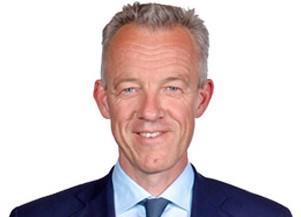AP1 is overhauling its equity strategies after internal analysis revealed various missed return goals, and plans to shift some of its foreign developed markets investment to passive or systematic management.
The new passive investment will be managed in-house, said the fund – one of Sweden’s four main state pension buffer funds – with the switch resulting in four of its six equity manager employees being made redundant.
Mikael Angberg, head of asset management at the SEK352bn (€33.5bn) pension fund, said: “We are doing some restructuring in the equity portfolio that affects our organisational structure.”
AP1 said that over the spring and autumn of this year, it had analysed and evaluated all equity strategies and found that in some cases return targets had not been achieved.
Angberg said the pension fund had decided to continue with active fundamental management in some parts of its equity investment, but to switch to internal passive or systematic management for others.
“We have also restructured the mandate with external managers in emerging markets (EM),” he said, adding: “These changes give us better conditions to achieve our return target and better risk utilisation.”
In March, AP1 picked 14 managers for EM equities allocation, having re-tendered the mandates the previous May. Though all firms on the list were approved, not all would manage money, the fund said at the time, with the funding decision to be made separately.
A spokeswoman for AP1 told IPE the pension fund’s Swedish equity investments we would continue to be managed on an active fundamental basis, but in other areas such as developed markets, management would switch from active to passive or systematic management.
The fund was not yet able to say what proportion over overall equities would be managed passively after the changes, she said.
The changes will not involve any new tenders for external managers, she said.
At the end of June, AP1 had 32% of its total SEK352bn portfolio in listed equities. Of this SEK124bn, SEK38bn was invested in Sweden, SEK35bn in developed markets and SEK51bn in emerging markets, according to the pension fund’s latest interim report.
Angberg said the equity management changes being made would allow AP1 to cut its annual costs by a considerable amount, even if they did lead to some one-off costs.
“Unfortunately, this also means that four equity managers are becoming redundant and we have now started union negotiations,” Angberg said.
It was always sad, he said, when “very competent and esteemed” colleagues were affected by a change in this way, but he added that unfortunately sometimes it was necessary.
Overall, AP1 currently has six employees working on active equity management, and the fund has a total of 68 staff.
“I also want to make it clear that this change has nothing to do with our equity manager leaving the fund,” Angberg said.
On Friday, AP1 confirmed that Olof Jonasson, the pension fund’s head of equities, had agreed to leave the organisation amid a dispute sparked by a breach of the fund’s internal rules over personal investments he had made.
Jonasson became the second high-level AP1 executive to leave under a cloud this autumn, with the fund’s then chief executive Johan Magnusson having been fired in September for buying shares in an IPO in which it had already been decided that AP1 would participate in as an anchor investor.












No comments yet